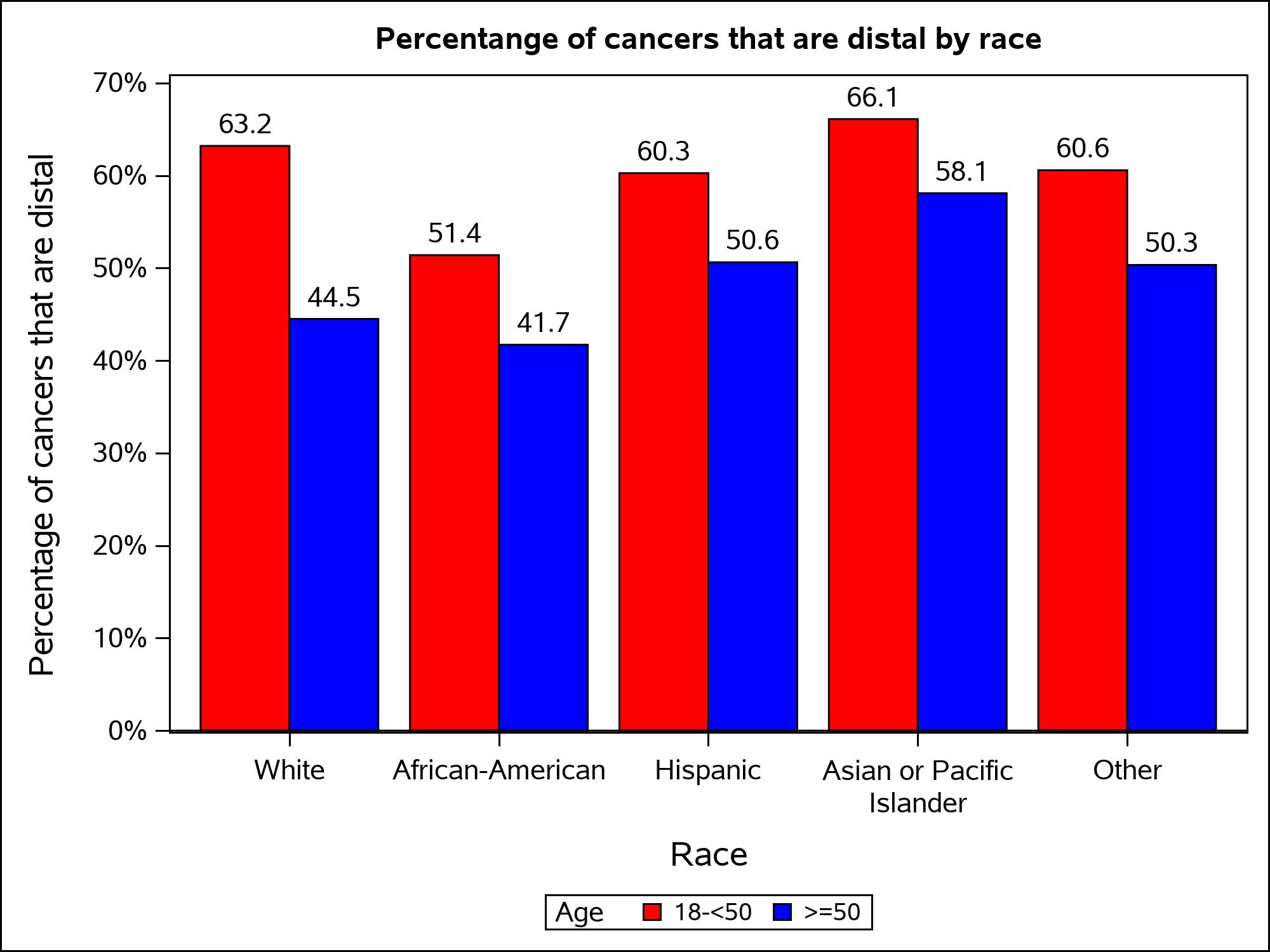INCREASING INCIDENCE OF LEFT SIDED COLORECTAL CANCER IN THE YOUNG: AGE IS NOT THE ONLY FACTOR
David Kearney*, Christy E. Cauley, Alexandra Aiello, Matthew Kalady, James M. Church, Scott Steele, Michael Valente
Cleveland Clinic Foundation, Cleveland, OH
Background: Recent single institution studies have shown that colorectal cancer (CRC) in patients <50 years is more common on the left side. This finding, however, has not been demonstrated on a population-wide basis. It is also unknown as to whether this finding is equal across all racial groups, as previous studies have shown a higher percentage of right-sided tumors in African-American patients. The aims of this study were to 1) compare the incidence of left-sided CRC in patients under and over 50 years, and 2) examine whether racial differences exist in the anatomical distribution of CRC. We hypothesize that the nationwide incidence of left-sided CRC is higher in younger patients, and that CRC in African-Americans has a right-sided predominance. Methods: We used the Nationwide Inpatient Sample to identify all patients with a diagnosis of colon or rectal cancer who underwent a colon or rectal resection from 2000 to 2014 by ICD-9 procedure and diagnosis codes. Patients with hepatic metastases or IBD were excluded from the analysis. Left-sided cancers were classified as those distal to the splenic flexure. Univariate analysis compared patients <50 and ≥50. Survey procedures were used to produce valid variance estimates based on the database's sampling design. Logistic regression models were used to determine the odds of a patient having left-sided CRC based on age. Results: We identified 344,309 patients meeting inclusion criteria. Using population estimates, 1,650,542 patients underwent a CRC resection, with a mean age of 68.5. 78% of patients were White, 10.2% were African-American, 6.3% were Hispanic, 2.8% were Asian/Pacific Islander and 2.7% were other races. A slight majority of patients had a proximal tumor (53.7%). Overall, 144,846 (11.4%) were under age 50. On univariate analysis, 61% of patients <50 years old had a left-sided tumor compared to 45% of patients ≥50 (OR=1.9; 95% CI:1.9, 2.0). The difference increased with age as only 38% of patients ≥70 had a left sided CRC (<50 vs ≥70 OR=2.5; 95% CI:2.5, 2.6). The absolute estimated incidence of CRC in the <50 cohort increased over the study period (15.6%) mainly due to a trend of increase in left-sided tumors (Figure 1). The distribution of CRC varied with race, with African Americans having a higher odds of right-sided tumors (OR=1.13; 95% CI:1.1, 1.16) and Asians/Pacific Islanders having a lower odds of right-sided tumors (OR=0.59; 95% CI:0.56, 0.62) compared to whites (Figure 2). Conclusion: In the <50 age group, the overall incidence of CRC is increasing. The majority of these tumors were left sided, and the absolute number and proportion of left sided CRC has increased over time. Tumor location changes with age and race. While colonoscopy is the preferred screening method in the <50 age group, flexible sigmoidoscopy could detect the majority of tumors if colonoscopy is not available.
Figure 1: Left-sided colorectal cancer by age group over time.
Figure 2: Left-sided colorectal cancer stratified by age and race.
Back to 2019 Abstracts




